The Jewel Tower, London
One of Westminster’s smallest tourist attractions, the Jewel Tower is worth a quick look for historic interest. Just don’t go planning any trips specifically to see it!

The Jewel Tower
The Jewel Tower is a spot that has intrigued me for a while. I work not far from Westminster, have done a number of cultural activities and walks in the area, and pass it on my way to Tate Britain from Westminster Station (not the closest station but I will always avoid changing lines more than once if I can). What I knew about it was that it was an odd little building in the care of English Heritage, and had quite a tough time coming back from Covid so still had restricted opening hours for a long time (Wednesday to Sunday when I was there, weekends only in the off-season).
But what has it got to do with jewels? And why is it stranded by itself next to Westminster Abbey? On a sunny Sunday, while I sauntered to Tate Britain, I saw it was open and thought I would stop by and find out.
What I can tell you for starters is that it has very little to do with jewels. The Jewel Tower is one of the few remaining parts of the Palace of Westminster (we glimpsed another briefly on a tour of the Speaker’s House). It was built circa 1365 for Edward III and known as the ‘King’s Privy Wardrobe’. So not necessarily jewels, but valuable objects. Although confusingly I’ve also previously read/seen that the King’s Privy Wardrobe was in Blackfriars, not Westminster. Regardless of these obscure origins, the Tower has had an interesting time over the centuries. Let’s take a closer look now.
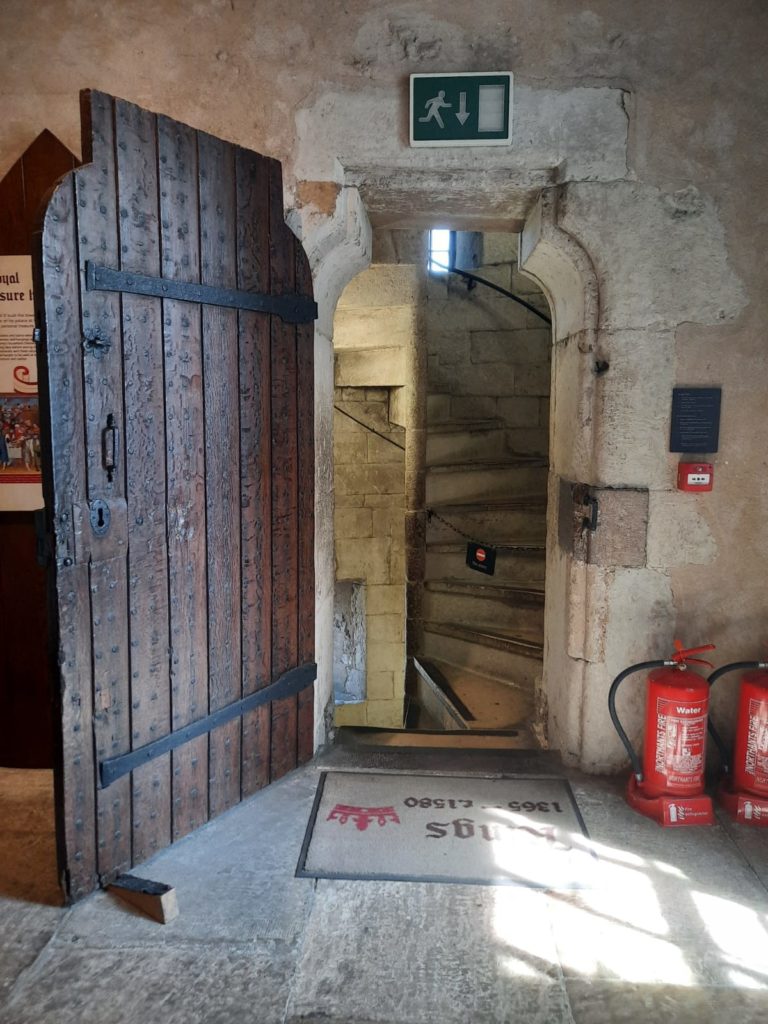
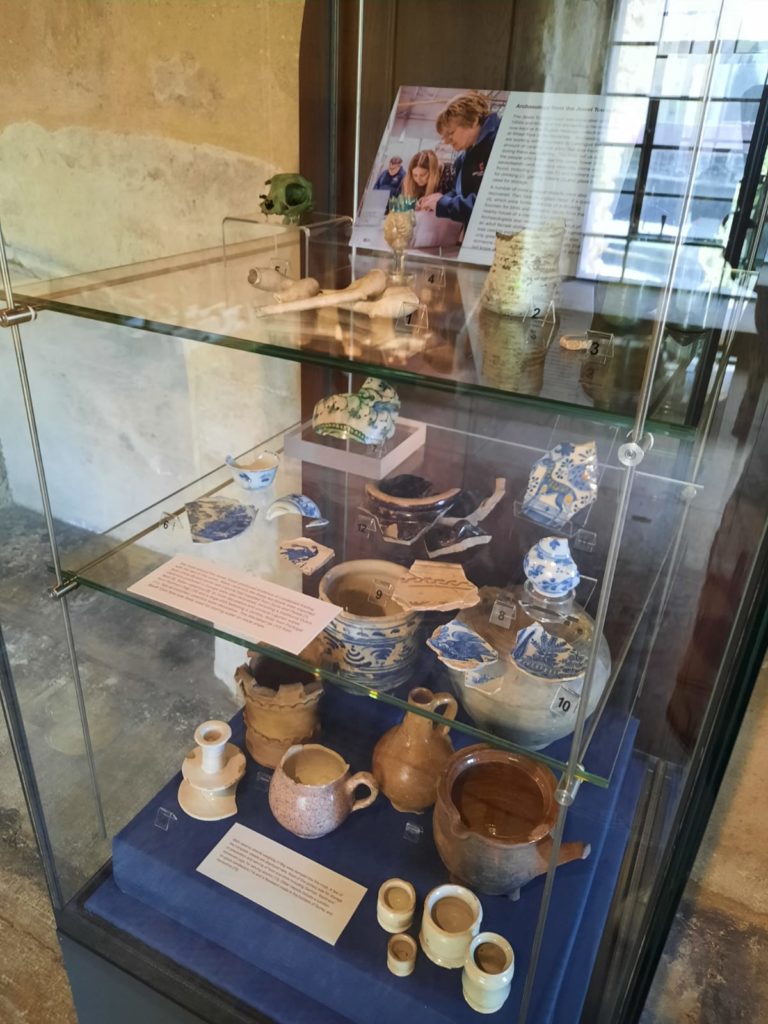
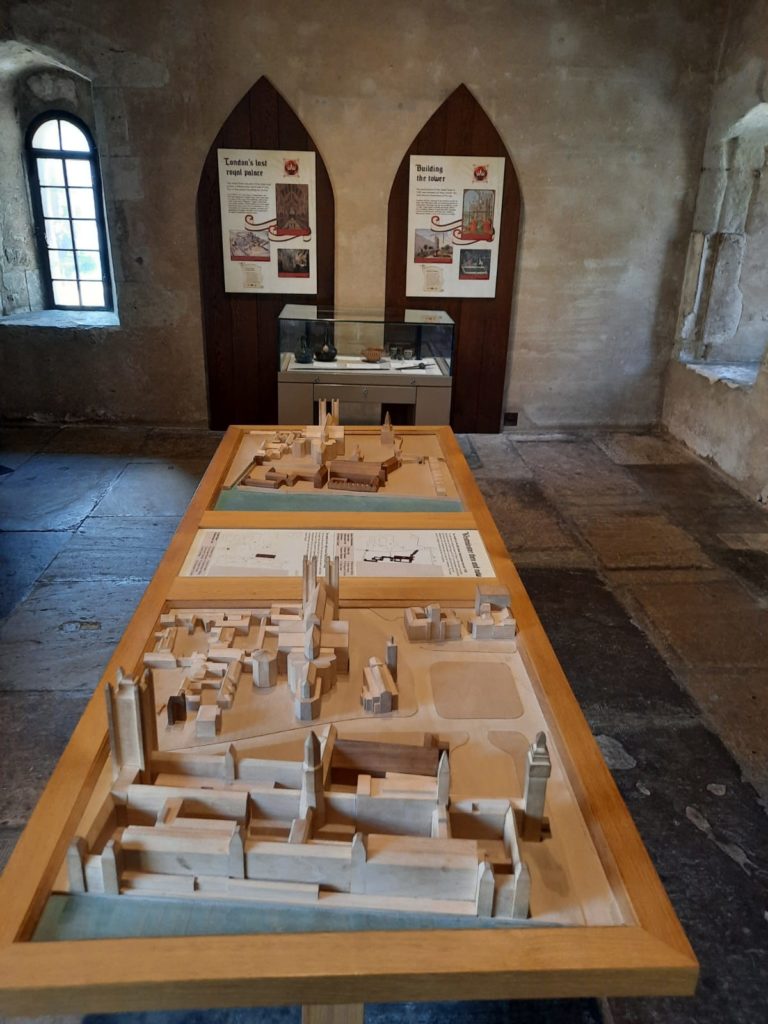
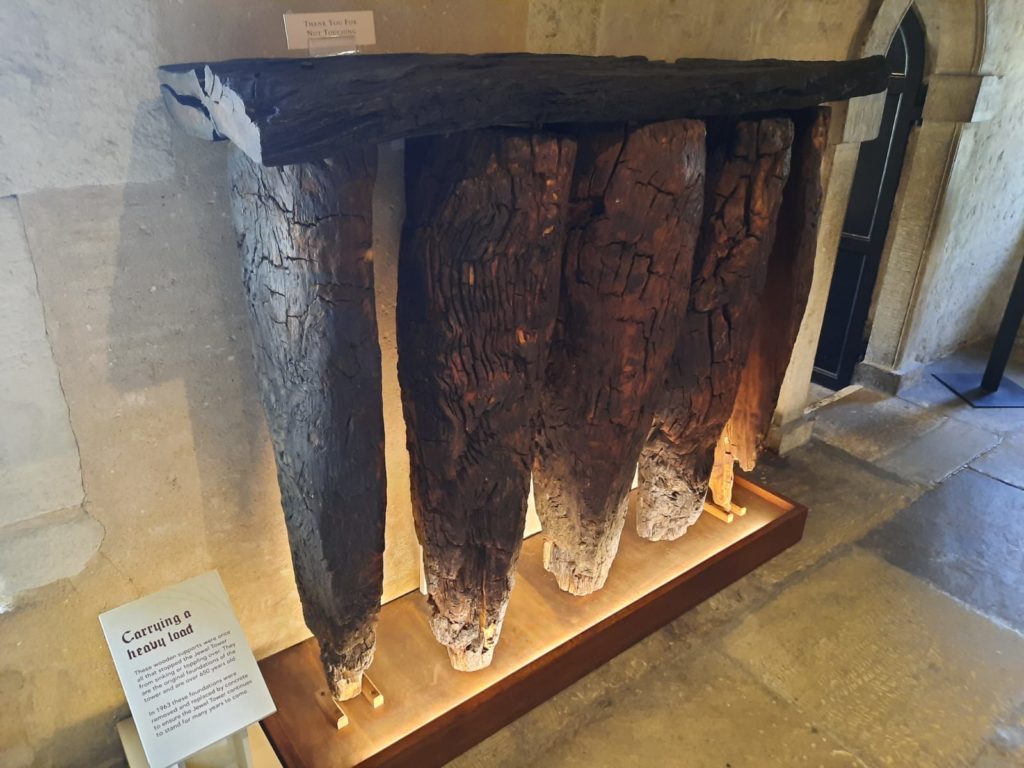
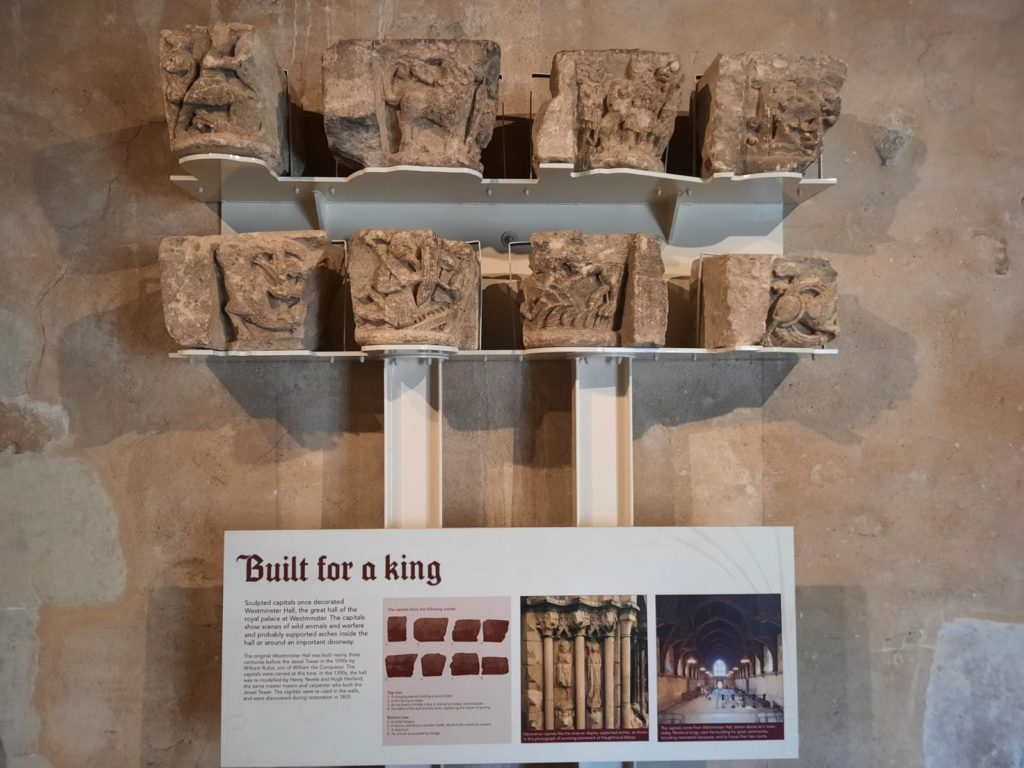
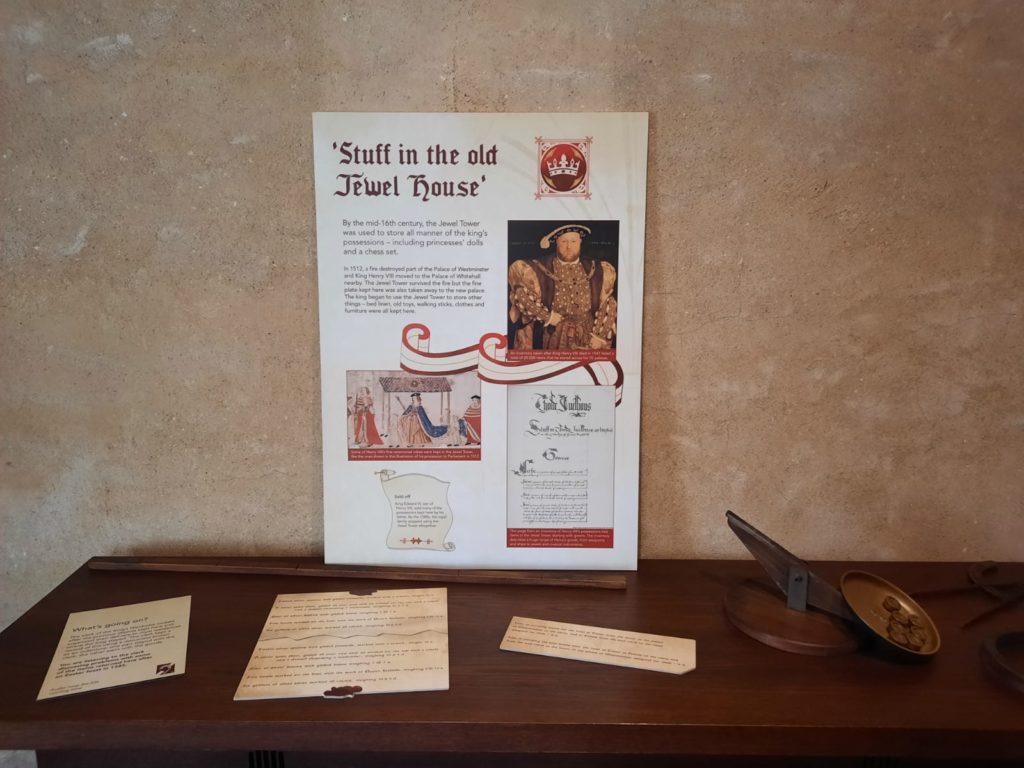
A Royal Strongroom
So if we are to believe that Edward III built his ‘privy wardrobe’ here rather than in Blackfriars, this means it was the place he kept his fine tablewares, textiles and the like. Household clerks would check items in and out and the king could, for instance, order objects to be sent to another of his palaces where he planned to spend time. Very practical. This was never the home of the crown jewels, which were at one time split between Westminster Abbey and the Tower of London before moving permanently to the latter.
The Palace of Westminster suffered several fires over the years. After a bad one in the 16th Century, Henry VIII more or less gave up living here. He kept using the Jewel Tower, but more like a loft with a jumble of household objects rather than valuables. Today it is one of only four of the palace’s buildings to survive.
After it gave up being a royal strongroom, the Jewel Tower had a series of different functions. It became record storage, for instance, or government offices. A particularly interesting function is its 19th Century one. At this time the Jewel Tower was home to the Department of Standards. In 1869 they standardised the imperial system of measurement here. Clerks issued official measures of pints, ounces, and so on from this building. They only gave up the offices in the 1930s when the vibrations from traffic became too much for sensitive instruments.
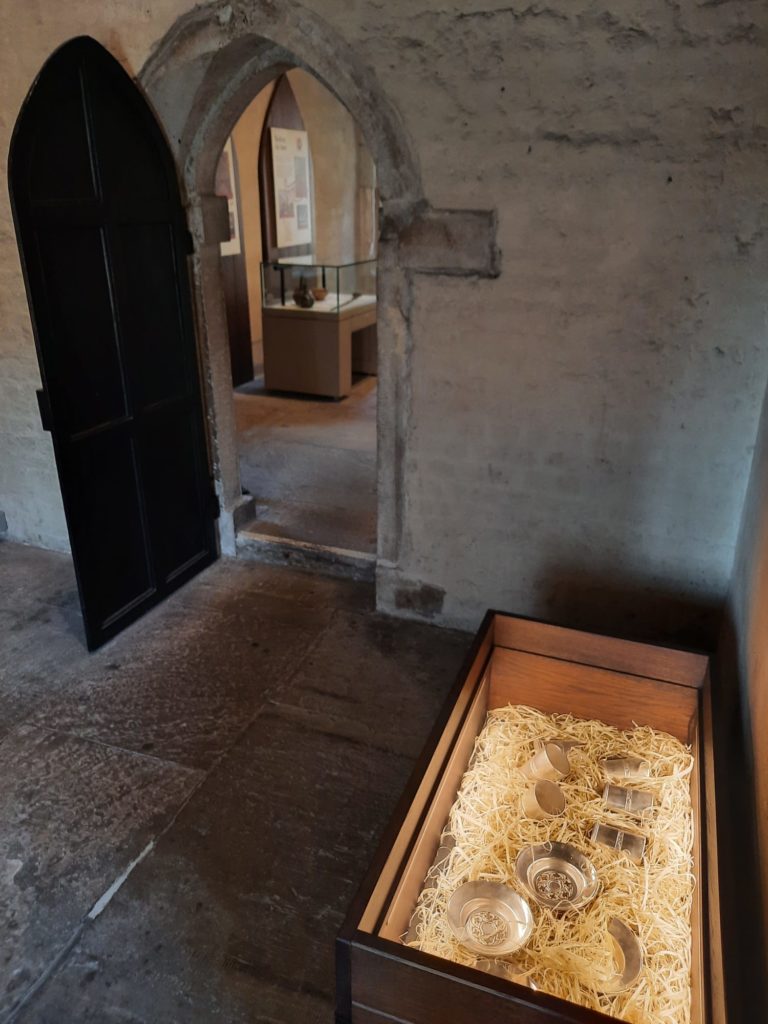
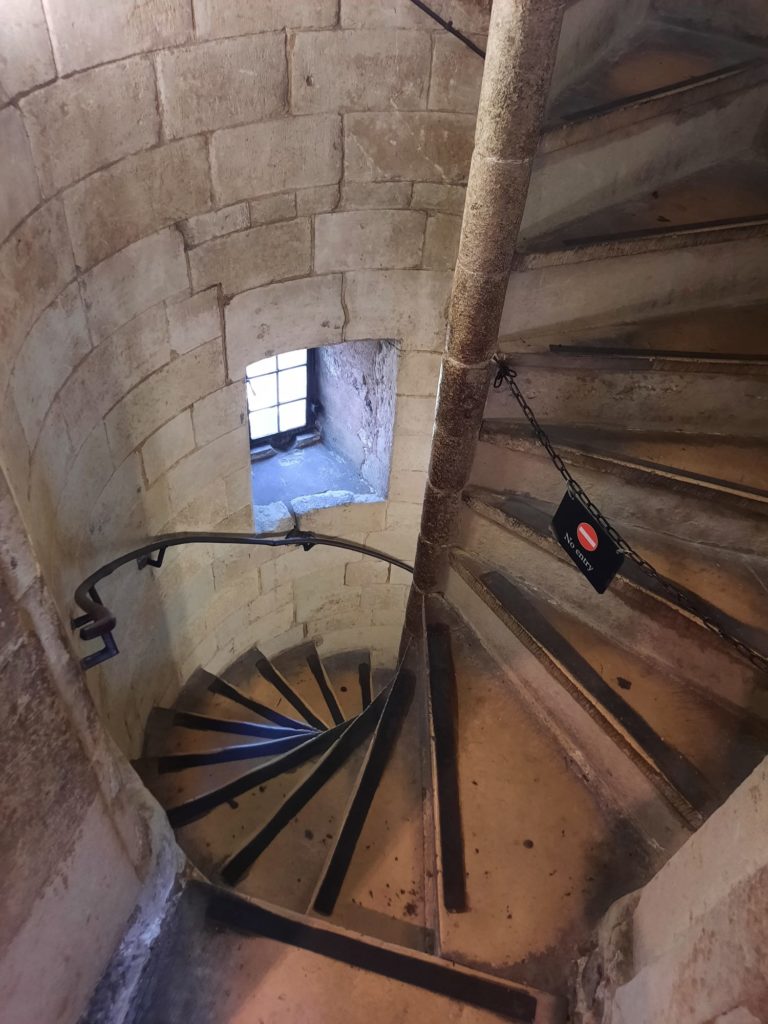
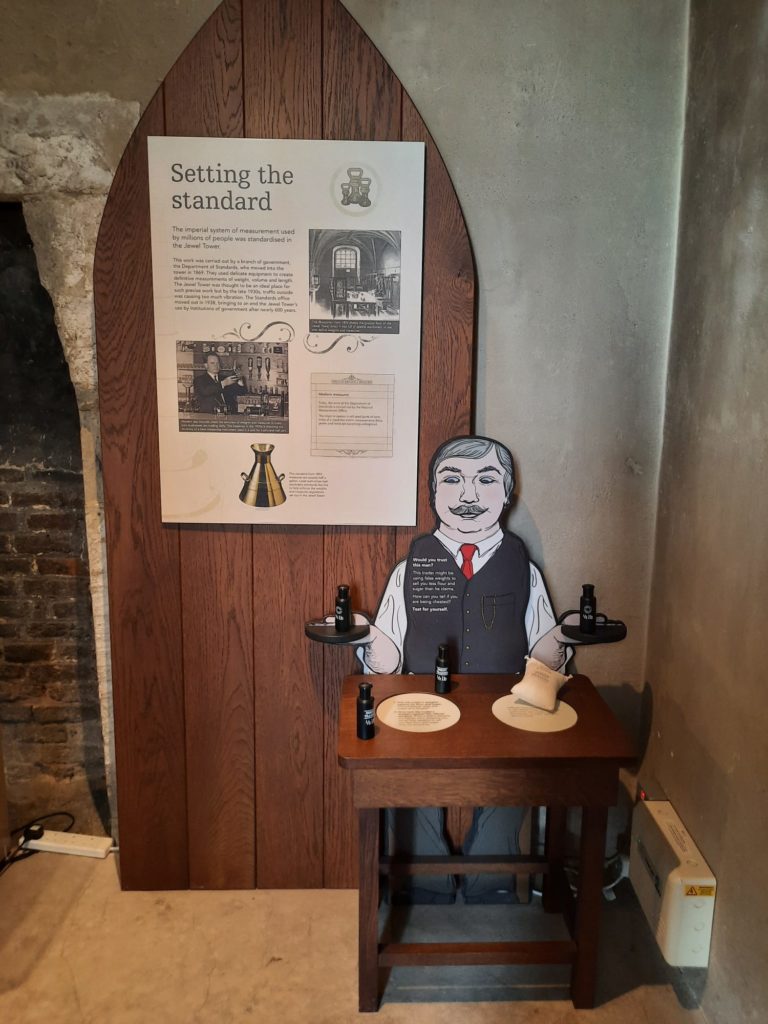
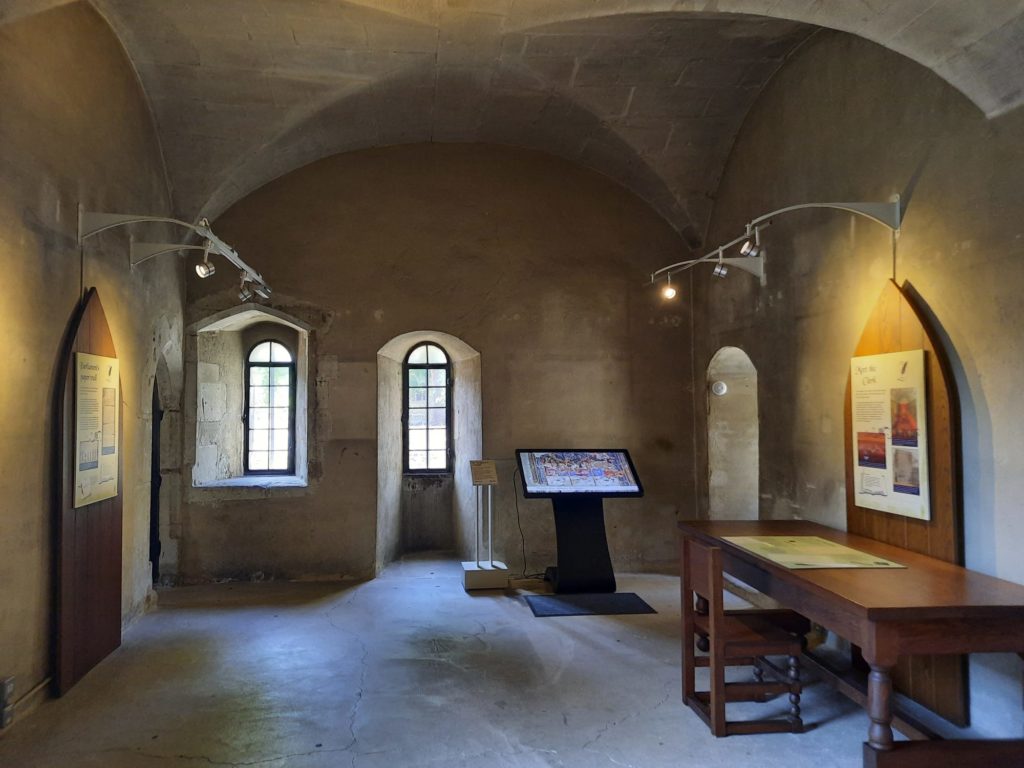
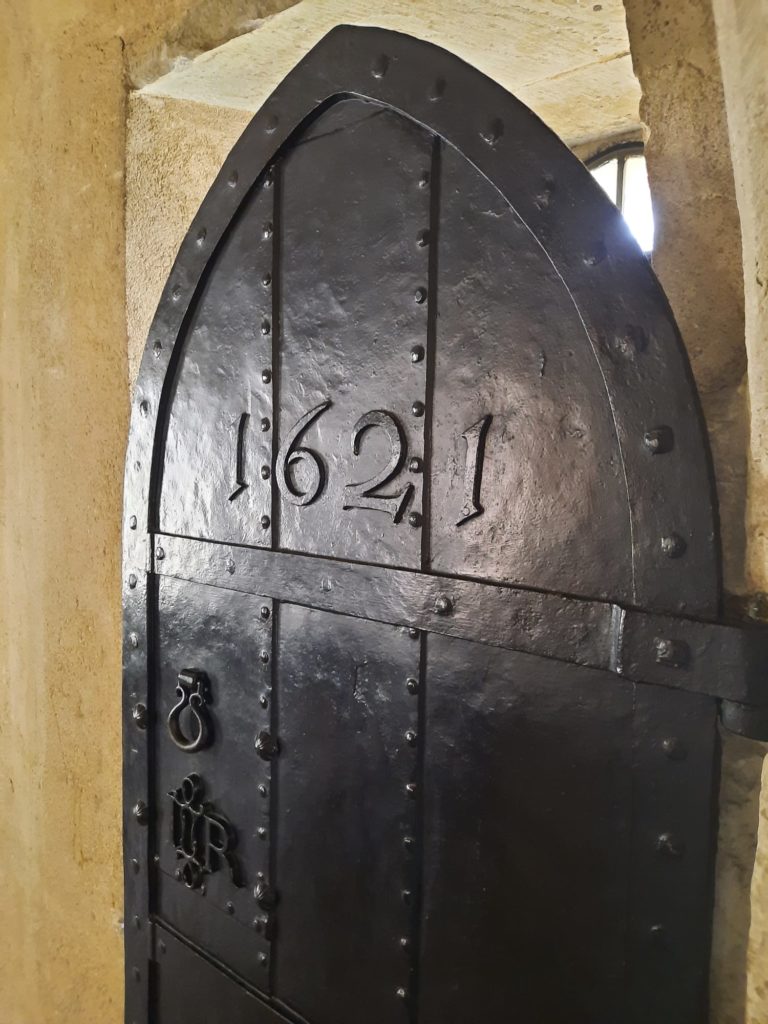
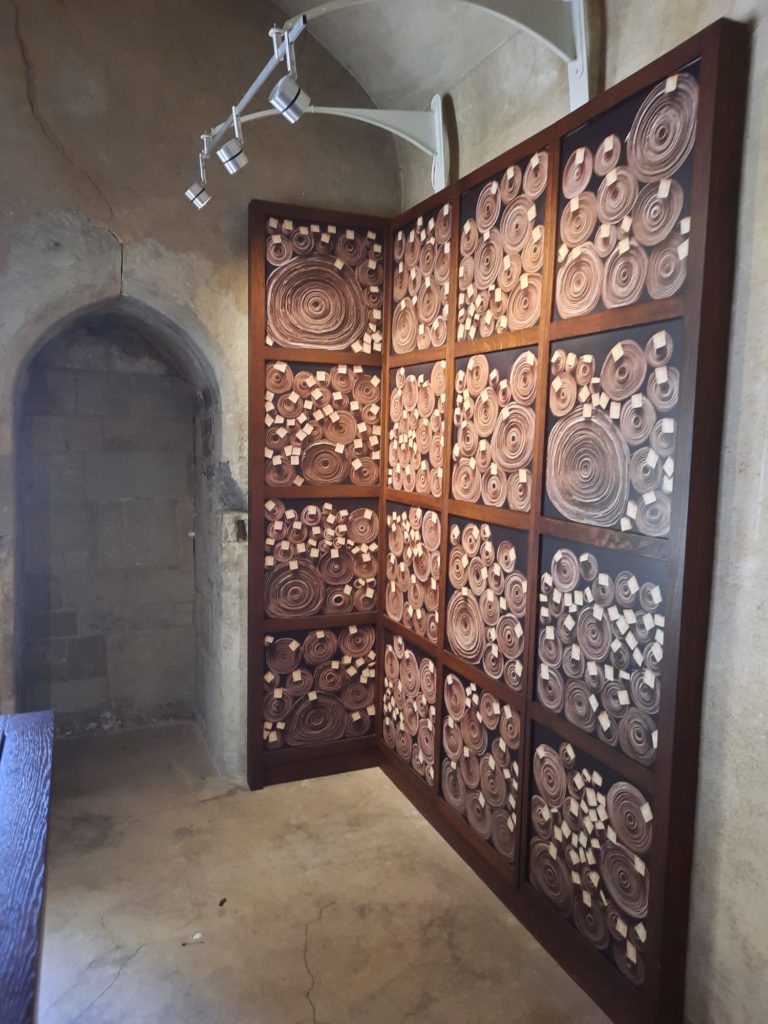
Interpreting A Historic Oddity
For something that is rather small and where the history is frankly a bit dry, English Heritage do a nice job of interpretation at the Jewel Tower. You start at the top and work your way down, taking in firstly royal history followed by the Tower’s civil service afterlife. There are original objects like archaeological finds and the old wooden foundations. Also modern interpretive tools like a sound clip where you overhear a conversation with a royal clerk, and a game to understand the importance of standard weights and measures. A lot of it is aimed at families, but this solo visitor found enough to fill half an hour or so.
Another story layered into the Jewel Tower is that of the lost Palace of Westminster. There are models which help you to understand what the landscape once looked like versus today’s Westminster. And an interesting interactive where you can explore the lost Saint Stephen’s Chapel. That part was perhaps the most interesting for me – understanding how this little building fitted into a completely different whole than what we see today.
So all in all the Jewel Tower is best as part of a day out. Perhaps you’re exploring the historic sites of Westminster. Perhaps you’re passing through and want to stop here for a quick look and a bite to eat at the cafe. I wouldn’t advise travelling in just to see this, but I’m glad I took a look and now know more about the Jewel Tower as I pass by.
Salterton Arts Review’s rating: 3/5
If you see this after your page is loaded completely, leafletJS files are missing.

